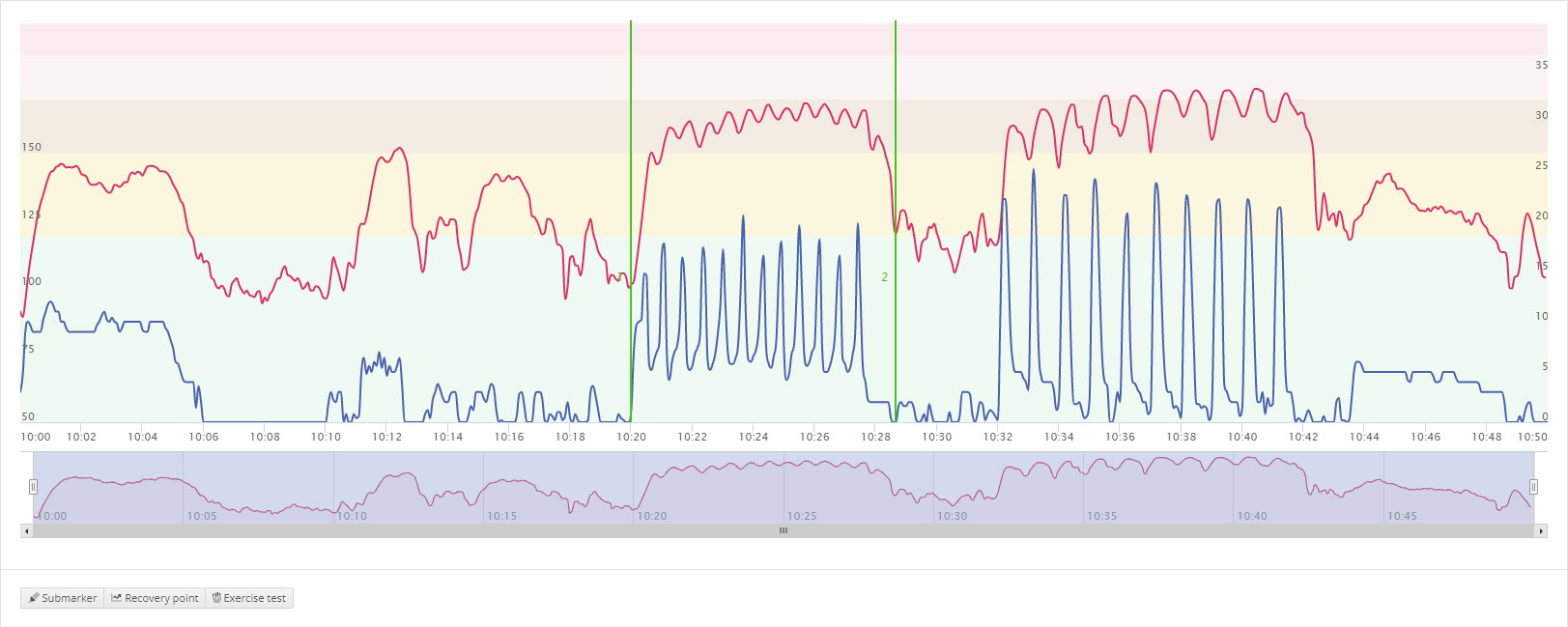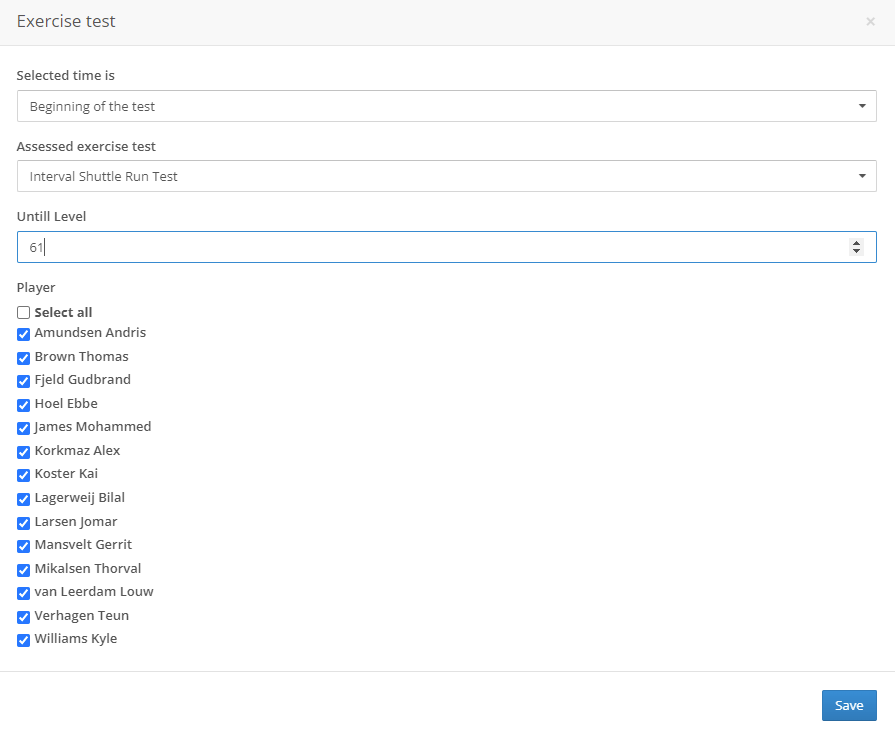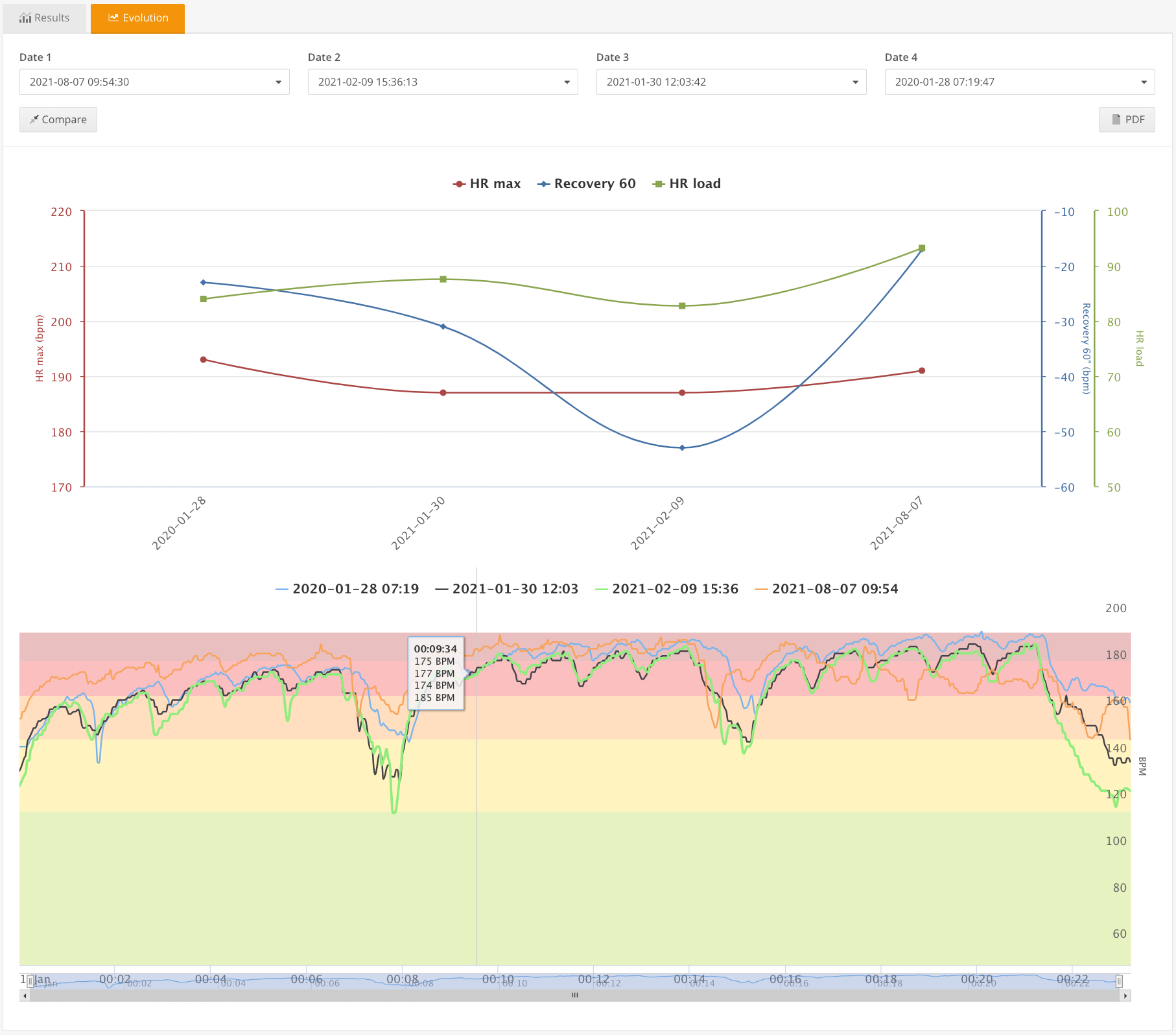The individualised sub-maximal fitness test
A cost-effective tool to monitor training effects
In team sports, considerable efforts are currently spent on athlete monitoring. However, it is important to consider that physical training is just one of the many aspects of the training process. Therefore, we should carefully weigh the invested time in athlete monitoring relative to other aspects such as tactical and technical training. A cost-benefit analysis can help to evaluate if the invested resources are justified, and we should also explore whether the cost-effectiveness of athlete monitoring can be improved.
In this regard, the monitoring of training effects is highly relevant. While subjective measures exist (e.g., athlete-reported outcome measures), the quantification of players’ adaptation to training often requires the execution of physical tests before, during, or after training. Most of these tests require time and maximal effort from the players in terms of running, jumping, and isometric or dynamic strength bursts. However, the implementation of these tests during in-season may contrast with the recommendations from athlete monitoring because of a recovery-focused approach between matches. Therefore, cost-effective alternatives should be explored to monitor training effects during in-season and match-dense periods.
The use of sub-maximal fitness tests (SMFT) is an approach that receives much attention these days. While the outcome measures of maximal tests are mainly related to the external load (e.g., distance covered during a running test), submaximal test performance is determined by the internal load response to a standardised external load (e.g., heart rate (HR) indices). A new study of Scott et al. (in press) evaluates the measurement properties of such an individualised sub-maximal fitness test (SMFTIFT60) to indicate training effects.
Their SMFTIFT60 takes four minutes and consists of 12 shuttle runs. Each shuttle should be performed by every player in 20 seconds, but the distance of the shuttle differs between players depending on their fitness level. This distance is determined by players’ performance on a maximal 30-15 intermittent fitness test (30-15IFT). Therefore, a maximal test should still be conducted once a while, for example at the end of pre-season.
The SMFTIFT60 shuttle run distance is calculated by following formula: [0.6 x (VIFT / 3.6)] x 20 seconds in which VIFT = the final running velocity achieved during the 30-15IFT, 0.6 = the definition of the submaximal level (60%), and 3.6 = a conversion from km.h-1 to m.s-1. In this blog, we will only focus on the HR-derived outcome measures of the test: 1) the average HR during the final 60 seconds of the test (HRex, relative to HRmax), and 2) HR recovery from the moment of the end of the test until two minutes after, expressed as a percentage decrement (HRR). Accelerometer-derived indicators (e.g., PlayerLoad) were also evaluated but will not be discussed in this blog because of their exploratory nature of use.

What was investigated?
- The reliability of the outcome measures.
Does the test give the same results for repeated measures? For this, two test sessions were organised with one week in-between. In this week, fitness and fatigue stimuli were minimised. - The convergent validity of the outcome measures.
Does the test measure what it intends to measure? For this, two test sessions were organised at the beginning and end of a 10-week pre-season period. The test sessions consisted of a SMFTIFT60 and a 30-15IFT, and (the change in) outcome measures of both tests were compared. - The dose-response sensitivity of the outcome measures.
Is the test able to detect a meaningful change in fitness/fatigue? For this, nine test sessions were organised throughout the entire season. The acute and chronic load preceding the test sessions were considered ‘the dose’ and the outcome measures of the test ‘the response’.
What were the main findings?
- The reliability of outcome measures
The HR response to the SMFTIFT60 showed high levels of reliability. The authors suggest that a 3.6% change in HRex may be used as a (conservative) threshold for determining practically meaningful changes in the test outcome. - The convergent validity of the outcome measures
The changes in the HR responses to the SMFTIFT60 were associated with the change in test performance on the 30-15IFT. These associations follow theoretical expectations that relate a lower HR for a standardised external load, and a faster HRR, to a higher fitness capacity. However, the authors also noted that the associations were not very strong which indicates that the SMFTIFT60 and a 30-15IFT may capture associated but divergent fitness characteristics (i.e., 30-15IFT performance is also determined by other factors such as change of direction ability and anaerobic speed reserve while SMFTIFT60 performance is mainly determined by players’ aerobic capacity). - The dose-response sensitivity of the outcome measures
High acute training loads performed in the 72 hours before the test were shown to be associated with reductions in HRex. The authors suggest that this relationship can be explained by the effects of short-term fatigue on HRex. This is important because it shows that changes in the HR response to a SMFTIFT60 can be explained by both fitness (point 2) and fatigue effects (point 3). Therefore, to infer on players’ fitness status, it is important to minimise the influence of short-term fatigue when conducting the SMFTIFT60. This may, for example, imply that the test is ideally performed when players are recovered from the previous game or an intense training session (e.g., MD+3, MD-2, MD-1 in a one-week match schedule with conditioning session on MD+3, see our previous blog for insights on MD-X scheduling).
Table 1. Scenarios with hypothetical explanations for interpreting changes in SMFTIFT60 HRex (%). We note the relative simplicity of these interpretations, as the relation between HRex and fitness or fatigue outcomes remains uncertain (i.e., high changes likely reflect fitness improvements (or overtraining symptoms, however overtraining is less common in team sports), but small changes are more difficult to contextualise (fitness or short-term fatigue, random error,…).
| Scenarios | HRex
test session 1 |
HRex
test session 2 |
Meaningful change? | Hypothetical explanation |
| Before vs after pre-season | 86% | 78% | Yes | Improved fitness |
| Before vs after congested schedule | 86% | 83% | Possibly | Improved fitness but short-term fatigue is also likely |
| Before vs after injury | 86% | 87% | Doubtful | Limited decrease in fitness |
| Before vs after intense training week | 86% | 86% | No | Small increase in fitness and short-term fatigue |
In conclusion, the SMFTIFT60 can be a practical tool to monitor players’ fitness during in-season in a cost-effective manner. The use of a submaximal test reduces the cost of monitoring. However, to ensure effectiveness, it is important to minimise the influence of short-term fatigue. This requires a little additional cost in terms of planning and standardisation. Finally, it is important to mention that this SMFTIFT60 mainly evaluates aerobic fitness and provides no insight into anaerobic fitness characteristics that are also important in team sports. It is evident that this test can be complemented with other assessments (e.g., mental fatigue, agility,…) to monitor training effects of the training proces.


To end, TopSportsLab is also conducting scientific research on the application of SMFT. We aim to publish our results soon. The Topsportslab platform contains tools for analysing various maximal and submaximal fitness tests. The user can easily import HR files and quickly analyse the HR test data by applying automatic test processing for multiple athletes at once. Also, the analysis of certain drills such as small-sided games is possible by applying submarkers for certain training drills or analyzing recovery over 60 or 120 seconds by adding recovery points. Finally, test results can be evaluated longitudinally on an individual and group level to guide your periodisation and load management.

Care to keep updated?
Subscribe to our newsletter.
You'll get updates about our recent blog posts and platform updates.